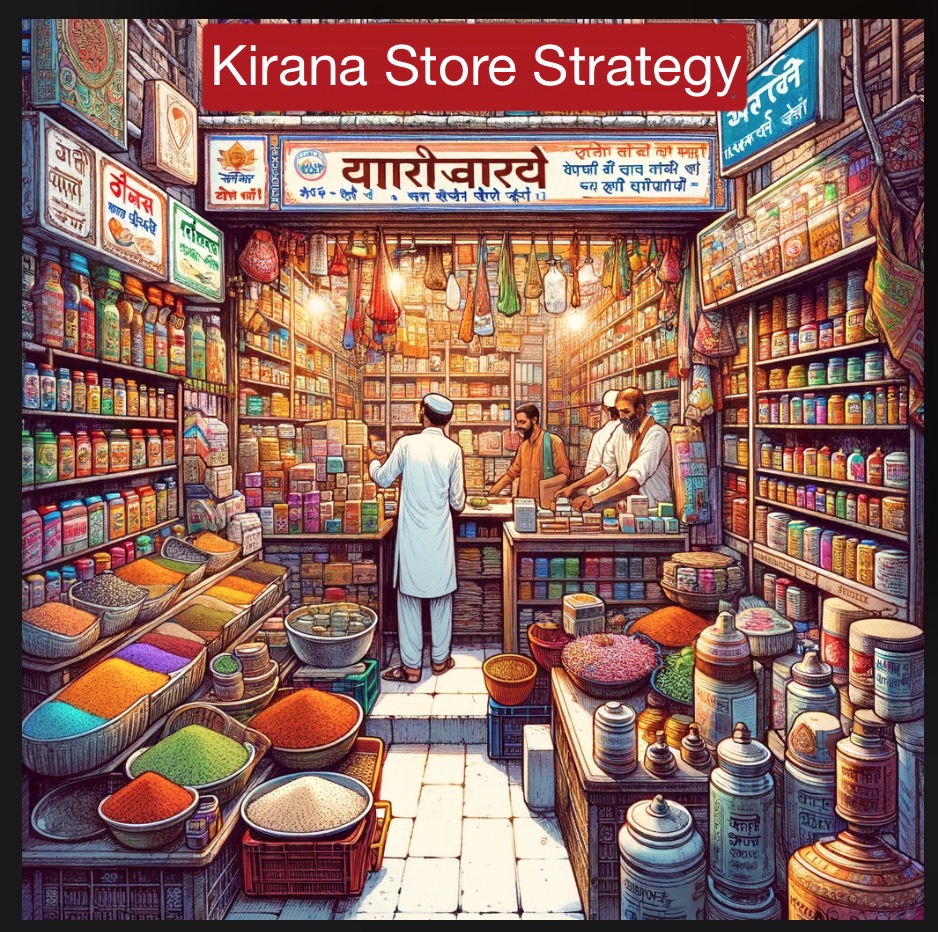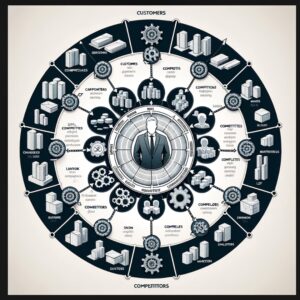Kirana store / Grocery store strategy

“Kirana Store strategy” or “Grocery Store Strategy,” is a highly tactical, short-term approach to retail operations, particularly in the grocery segment. This strategy emphasizes breadth over depth in product offerings, prioritizes immediate sales over long-term brand or category development, and leverages pricing flexibility to drive transactions. This strategy is not limited to retail, but seen used widely by many businesses especially services sector. While innovative, it presents several challenges and opportunities within a retail context. Here’s a more detailed analysis:
Overview of Grocery Store Strategy
Core Characteristics:
- Broad Product Assortment with Limited Stock: Aims to attract a wide customer base by offering a diverse range of products but keeps inventory levels low to reduce holding costs.
- Short-term Focus: Lacks a long-term strategic vision, concentrating instead on immediate sales and revenue generation through quick inventory turnover.
- Commission-based Sales: Employs a sales model that rewards volume, incentivizing staff to push for more sales without necessarily considering long-term customer loyalty or brand equity.
- Dynamic Pricing and Bargaining: Adopts flexible pricing strategies, including bargaining with customers and frequent price cuts, to stimulate demand and compete on price.
Strategic Implications
Advantages:
- Can quickly adapt to changing market trends due to low inventory levels and a broad product range.
- May appeal to price-sensitive customers or those looking for deals.
- Lowers risk associated with unsold inventory due to minimal stock holding.
Challenges:
- Difficulty in building customer loyalty as the focus shifts away from brand or product consistency to price competition.
- May struggle to achieve sustainable profit margins due to constant price cuts and lack of focus on higher-margin products or services.
- Operational complexity in managing a wide range of products, each with different demand patterns and supplier relationships.
- Short-term sales focus might neglect the potential benefits of investing in long-term customer relationships and brand value.
Similar Tools and Methodologies
While the “Grocery Store Strategy” is unique, several existing retail and business strategies share some characteristics or offer alternative approaches:
- High-Velocity Retailing: Focuses on rapid turnover of merchandise with a keen eye on trend responsiveness, somewhat similar to the broad product strategy but with a more strategic approach to inventory management and supplier relationships.
- Flash Sales Model: Uses limited-time offers to drive traffic and sales, relying on price cuts and urgency but typically within a more defined strategic framework.
- Loss Leader Strategy: Involves selling selected items below cost to attract customers, hoping they’ll purchase other higher-margin products, a tactic that shares the price flexibility aspect.
- Blue Ocean Strategy: While not directly comparable, it encourages businesses to find new market spaces (blue oceans) where competition is irrelevant, contrasting with the highly competitive, price-driven approach of the Grocery Store Strategy.
In conclusion, while the “Grocery Store Strategy” offers an innovative approach to retailing, it’s important for businesses to consider the long-term implications of such a strategy on brand equity, customer loyalty, and sustainable growth. Alternatives or complementary strategies may provide a more balanced approach to achieving both short-term sales targets and long-term business objectives.
Strategy boffins team has come up with Kirana store or Grocery store strategy



